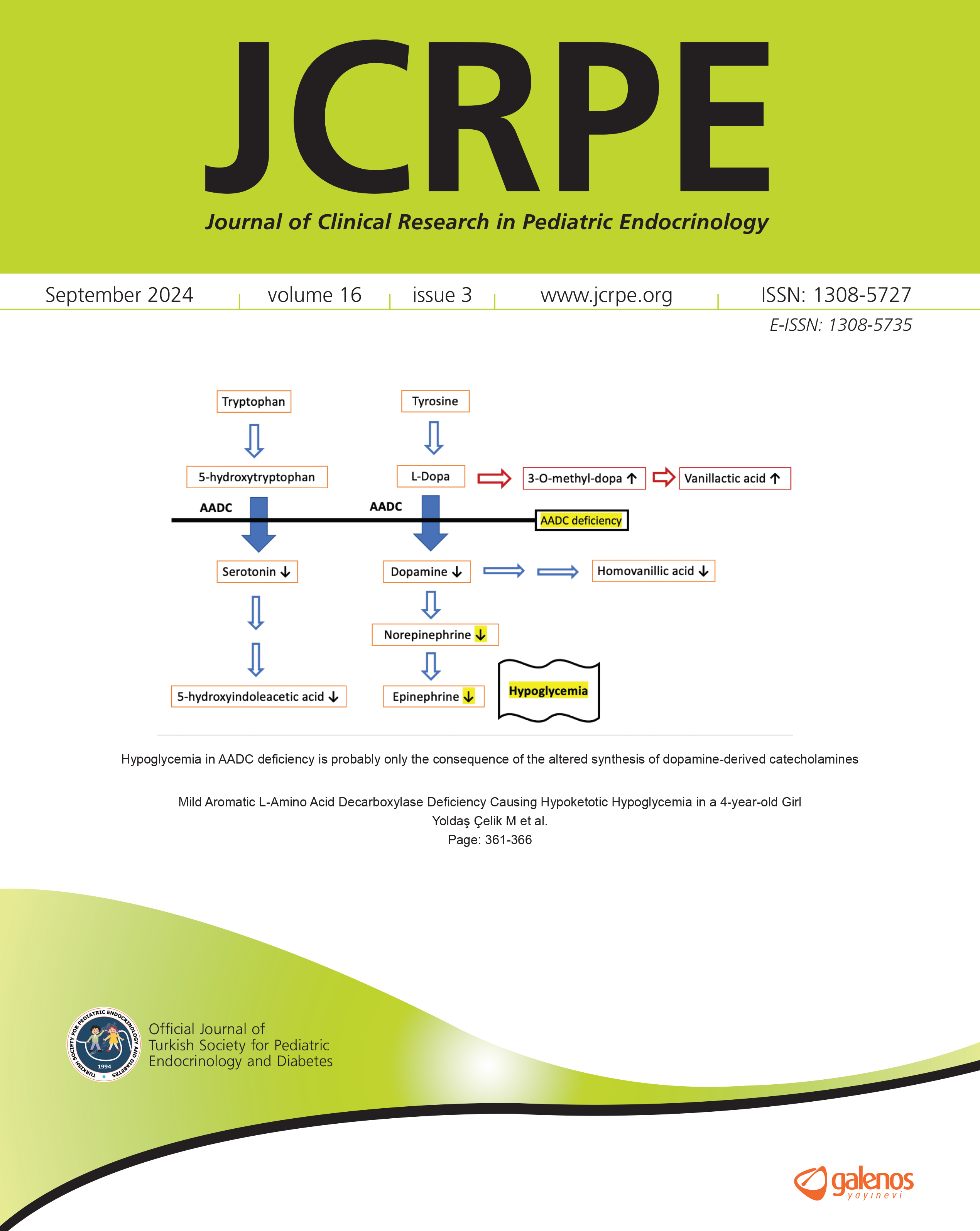Inequalities in Access to Diabetes Technologies in Children with Type 1 Diabetes: A Multicenter, Cross-sectional Study from Türkiye
Kagan Ege Karakus1, Sibel Sakarya2, Ruken Yıldırım3, Şervan Özalkak4, Mehmet N. Özbek4, Nurdan Yıldırım5, Gülcan Delibağ6, Beray S. Eklioğlu7, Belma Haliloğlu8, Murat Aydın9, Heves Kırmızıbekmez10, Tuğba Gökçe11, Ecem Can11, Elif Eviz11, Gül Yeşiltepe-Mutlu11, Şükrü Hatun111Barbara Davis Center for Diabetes, University of Colorado, Aurora, CO, USA2Department of Public Health, Koc University, Istanbul, Türkiye
3Department of Pediatric Endocrinology and Diabetes, Diyarbakir Child Diseases Hospital, Diyarbakir, Türkiye
4Department of Pediatric Endocrinology and Diabetes, University of Health Sciences Gazi Yasargil Training and Research Hospital, Diyarbakir, Türkiye
5Department of Pediatric Endocrinology and Diabetes, Dr. Sami Ulus Child Health and Diseases Training and Research Hospital, Ankara, Türkiye
6Department of Pediatric Endocrinology and Diabetes, Cukurova University Balcali Hospital, Cukurova University, Adana, Türkiye
7Department of Pediatric Endocrinology and Diabetes, Necmettin Erbakan University, Konya, Türkiye
8Department of Pediatric Endocrinology, Marmara University, Istanbul, Türkiye
9Department of Pediatric Endocrinology, Ondokuz Mayis University, Samsun, Türkiye
10Department of Pediatric Endocrinology and Diabetes, University of Health Sciences Umraniye Training and Research Hospital, Istanbul, Türkiye
11Department of Pediatric Endocrinology and Diabetes, Koc University, Istanbul, Türkiye
INTRODUCTION: To determine inequalities in access to diabetes technologies and the effect of socioeconomic factors on families with children with type 1 diabetes.
METHODS: In this multicenter cross-sectional study, parents of children with type 1 diabetes completed a questionnaire about household sociodemographic characteristics, latest HbA1c values, continuous glucose monitoring (CGM) and insulin pump use of children, the education and working status of parents. These characteristics were compared between technology use (only-CGM, only-pump, CGM+pump, no technology use).
RESULTS: Among 882 families, only-CGM users, only-pump users, and CGM+pump users compared with no technology users, adjusting for age, sex, region, education levels, number of working parents, and household income. Children living in the least developed region had lower odds of having only-CGM (OR=0.20, 95%CI 0.120.34) and having CGM+pump (OR=0.07, 95%CI 0.030.22) compared with those living in the most developed region. Children with parents who had not finished high school had lower odds of having only-CGM (Mothers: OR=0.36, 95%CI 0.190.66; fathers: OR=0.32, 95%CI 0.180.60) or both CGM+pump (OR=0.27, 95%CI 0.110.64; fathers: OR=0.34, 95%CI 0.150.79) rather than no-technology compared to children whose parents has a university degree. Every $840 increase in the household income increased the odds by 5% for having only-CGM (OR=1.05, 95%CI 1.021.09) and CGM+pump (OR=1.05, 95%CI 1.011.08).
DISCUSSION AND CONCLUSION: Socioeconomic factors such as education, regions, and income were associated with inequality in access to technologies. The inequalities are more prominent in access to CGM while CGM had a bigger contribution to glycemic control.
Manuscript Language: English



























